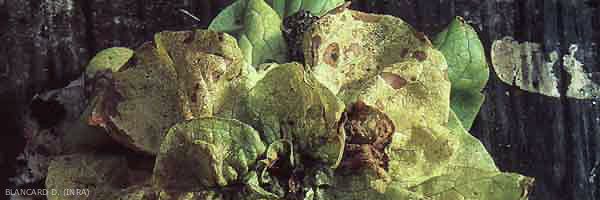
Tomato spotted wilt virus (TSWV)
- classification : Bunyaviridae, Tospovirus
The Tomato spotted wilt virus (TSWV) is excessively polyphagous. It has an almost global distribution and is more or less severe in some salad producing countries. Its damage can be very significant in several states of the United States, in various countries of Eastern Europe (Bulgaria, Hungary, Poland ...) and in Greece. It seems to be on the rise in a few countries in Asia and Oceania.
In France, this virus disease, which affected several cultures in our country before the last war, had more or less completely disappeared. During the 1980s, the introduction of a new vector, the thrips Frankliniella occidentalis , greatly compromised this situation. It is now considered of concern for many horticultural productions. In some production regions, the coexistence of other vegetable or floral crops contaminated with lettuce gives rise to serious epidemics causing significant damage. This is particularly the case in the south of France (Provence-Côte d'Azur and Languedoc-Roussillon regions) where the first damage to butter lettuce and batavia and escarole was described in 1989. The crops produced in the open field or under shelter can be affected, this more often in summer.
For many years, we have grouped together under the name TSWV (figure 1), without knowing it, two viruses. Indeed, studies carried out fairly recently on a large number of isolates have shown that they could be separated, initially, into two serologically distinct groups:
- the L-TSWV group (for lettuce) which appeared to be the most widespread;
- the I-TSWV group (for Impatiens); isolates from this group are now considered to belong to another virus (described in 1990), which received the designation Impatiens necrotic spot virus (INSV). This virus is also transmissible by Frankliniella occidentalis ; it has long been considered specific to impatiens. Currently, it is known to infect several ornamental crops (anemone, gerbera, begonia); it was recently identified on lettuce in Italy.





